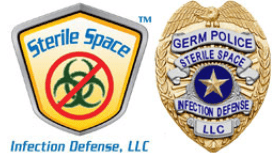Carpeting can feel cozy beneath the feet and help you save money on heating bills in the winter. The trade-off is that carpeting is host to a world of microscopic nastiness.
Most people walk through their homes wearing shoes – shoes that they wore outside. Think about what types of things are on sidewalks regularly – animal excrement, spit, chemicals, bacteria, and viruses. The bottom of your shoes picks up all of that, tracks it inside, and grinds it into the carpet. Later, after you remove your shoes, bare feet walk on the carpet, picking up what the shoes brought in from outside. Some people lay down on the carpet to watch television, and babies crawl across it and even put their mouths on it.
What’s Lurking in Your Carpet?
Carpet can be a pretty nasty place. You might be surprised to find out what’s lurking beneath the surface. The most common culprits in household carpeting include:
- Norovirus. Noro is best known for wreaking havoc on cruise ships, elder care, and day care facilities. It can also live in carpet. Norovirus is strong. It can withstand enough to stay active in carpet fiber and furniture for up to six weeks.
- Campylobacter. This bacterium loves damp, moist areas. If you clean the carpet but it doesn’t dry thoroughly enough or fast enough, Campylobacter can continue to thrive. This is more likely to occur when people rent machines to clean their carpet themselves. Professional cleaners have special equipment that extract more of the moisture to promote fast, thorough drying of the carpet.
- Salmonella. This is most familiar to people as something that lurks in underdone meat or raw eggs. Most people don’t realize that it also lives in their carpet. People track it into their houses on the bottoms of their shoes, and then it grows in the carpet and continues to track through the house.
These three bacteria have one thing in common – a serious, nasty stomach bug. Children, the elderly, and those with compromised immune systems are most at risk for complications.
What Else is in Your Carpet Could Be Harmful?
In addition to bacteria that causes acute illness, there are things lurking in your carpet that exacerbate allergies and cause chronic symptoms.
- Mold. It loves moisture. If something spills or leaks on the carpet and no one cleans it up or if it doesn’t dry quickly enough after cleaning, mold is likely to grow. Anytime you walk across the carpet, you kick up those spores and circulate them into the air.
- Dust mites. These microscopic bugs live anywhere dust gathers. Carpets can harbor hordes of these little creatures. The mites themselves are not what people are allergic to. It’s their excrement that causes a reaction in people. Most dust mites survive the vacuum. Only a deep cleaning of the carpet can get to them.
- Pet Dander. Dander is only part of the problem with pets. Saliva and waste matter are allergens. Fur collects dust, pollen, and fleas. The dander itself is problematic, because it’s sticky and hard eradicate.
- Pollen. If it’s outside, it’s going to cling to clothing and shoes and come inside and settle into the carpet.
Although regular vacuuming helps get some of these things out, it doesn’t really clean the carpet. Professional cleaning, at least annually, is your best bet. Taking off your shoes in the house can cut down on what’s tracked in and ground in.
Additional Resources:
https://www.naturalnews.com/2017-04-19-your-carpet-is-harboring-nasty-bacteria-and-allergens.html
https://www.athomeinterior.org/carpet-cleaning/germs-and-bacteria-that-could-be-lurking-in-your-carpet-and-upholstery.html
https://www.yourhomestyles.net/carpet-cleaning/surprising-germs-that-could-be-lurking-in-your-carpet.html




